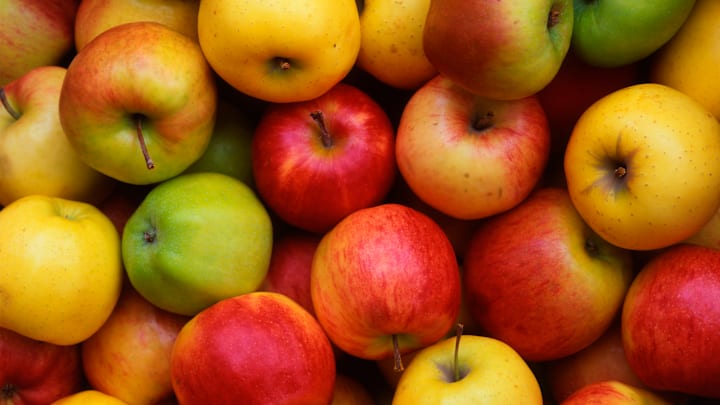Chances are, your annual fall pilgrimage to pick apples results in lugging home a lot more fruit than you can eat in just a few days. Or perhaps you just get overly excited when faced with a grocery store sale. Either way, at some point, you’ll probably have far too many apples in your kitchen just waiting to go bad. One key to keeping them fresh until you can eat them? Humidity, according to Food & Wine.
There’s a reason grocery store produce shelves are misted with water regularly throughout the day. The extra moisture can keep fruits and vegetables fresh, reducing the amount of rotten food that has to be thrown out. The humid air keeps the produce from losing water, preventing shrinkage.
Apples are one of those fruits that can benefit from high humidity. The ideal storage environment for them involves a temperature of between 30°F and 35°F and relative humidity of 90 to 95 percent.
If you don’t have a cold, damp cellar on hand to keep your apples moist, stick them in the fridge wrapped in a damp paper towel. You can also leave them in a plastic bag, but make sure to poke a few holes in it to let out the ethylene gas the fruit give off as they ripen. If you can, keep your apples in a crisper drawer in the fridge, as that will stay more humid than the rest of your refrigerator. Just be careful not to store them with other produce that’s sensitive to ethylene, like strawberries—the gas given off by the apples will cause other produce to rot faster.
If you’re at a grocery store, you may be buying apples that have already stayed fresh for a long time. Controlled-atmosphere storage—keeping fruit at tightly controlled temperatures and oxygen and humidity levels—can keep apples tasting fresh for months, even up to a year after harvesting. That’s why you can enjoy the fruit year-round, though they’re largely harvested between July and October.
Discover More Helpful Tips Here:
A version of this story originally ran in 2018; it has been updated for 2024.
